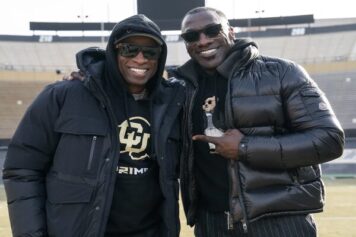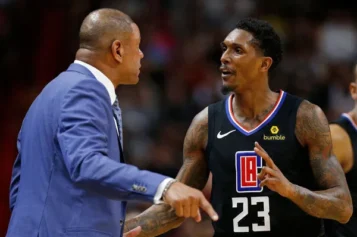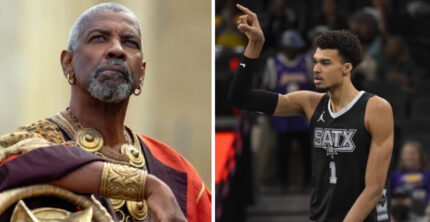The Chicago Bulls have come under fire from a handful of the NBA’s black executives and were even ripped on ESPN First Take today for failing to consider any minority candidates before hiring Denver Nuggets general manager Arturas Karnisovas as executive vice president of basketball operations
With a plentiful list of capable African-Americans available, the Bulls continue the pattern of white privilege that has made it difficult for qualified coaches and executives of color to get a shot.
As the NBA and NCAA continue to take pride in being drum majors for diversity in sports — despite some watershed moments that give an appearance of progress — the overall numbers still reflect the unwillingness of white power brokers to hire Blacks to head coaching and leadership positions.
According to a recent report from the Post-Gazette, there are only 14 black head coaches (18.7%) of the 75 programs in college basketball’s six major conferences. And if you just figure the Power Five conferences, then the number dips to 13.8%, given that the Big East has five black head coaches.
In 2015, The Shadow League wrote a story entitled, “The Vanishing Of Black College Coaches At Power Schools.”
https://twitter.com/Dr_Tyrie_L_Fant/status/640756730956115968
As the number of black scholarship players continues to increase, gains made in the head coaching ranks seem to be going in the opposite direction.
Black Players
According to data collected by Richard Lapchick, the director of The Institute for Diversity and Ethics in Sport, “As of the 2017-18 season, 53.6 percent of Division I men’s basketball players were black, up 0.6 percent from the previous season. However, those numbers spike at the elite levels as the players get better because nearly 80 percent of scholarship players at major conference schools are black.
Of the 104 players that were named first, second or third-team all-conference in the sport’s seven biggest leagues last season — the ACC, American, Big 12, Big East, Big Ten, Pac-12 and SEC — 87 of them were black, or 83.7 percent. Of the 15 players that were named All-Americans last year, 13 — or 86.7 percent — were black.
Those numbers don’t mesh with the number of black head coaches in the college ranks.
White Head Coaches
In statistics released by NBCsport.com:
“In 2000, 25 percent of head coaches in the six major conferences were black. In 2010, the number was 24.7 percent. As recently as 2005, 32.3 percent (22 of 68) of high major head coaches were black.
Today, there are 353 Division I men’s basketball programs, and just 103 of them — or 29.2 percent — have black head coaches. When HBCUs are taken out of the equation, the number falls to 24.1 percent.”
In the sport’s Big Seven conferences, that number is 22.9 percent. The Pac-12 does not have a single black head coach. The only black head coach in the Big Ten is Michigan’s Juwan Howard.
Of course, in those seven conferences, more than 59 percent of the assistant coaches are black. Every single one of those 87 programs has at least one black assistant coach.
Why are the numbers declining?
When just (12.6 percent) of schools in the seven major conferences, have a black AD and just one of those 87 universities has a black president — Ohio State’s Michael Drake — the root of the problem has long been discovered.
“People hire people that look like them,” Georgetown head coach Patrick Ewing said. “It’s not necessarily racist. Most of the time you hire a person you can relate to.”
The NBA isn’t faring much better.
With the firing of Kenny Atkinson and hiring of Jacque Vaughn, the Brooklyn Nets boosted the number of African-American head coaches in the NBA to 8 out of 30 teams.
Lloyd Pierce (Atlanta Hawks), J.B. Bickerstaff (Cleveland Cavaliers), Dwane Casey (Detroit), Doc Rivers (LA Clippers), Nate McMillan (Indiana Pacers), Alvin Gentry (New Orleans Pelicans), Monty Williams (Phoenix Suns) are the others.
That’s still less than 30 percent in a league whose player population stands at about 75 percent Black. At this point, those numbers don’t make much sense. There’s no reason for such a disparity anymore.
The numbers in the NBA front office positions are even worse.
The Knicks entered the 2019-20 season with the league’s only All-Black trio (president, general manager and head coach) in NBA history. It didn’t last long as the new President Leon Rose is white and so is the interim head coach Mike Miller. President Steve Mills and head coach David Fizdale didn’t make it through the season.
When 38-year-old James Jones was hired as General Manager of the Phoenix Suns and 39-year-old Tayshaun Prince as VP of Basketball Affairs for the Memphis Grizzlies, it was seen as a big deal for the league and its future.
It would appear, however, that the NBA is still treading water when it comes to hiring African-Americans to front office leadership positions.
In 2016 there were two black NBA presidents and three black general managers. Today there are six black general managers; Kobe Altman (Cavaliers), Elton Brand (Sixers), Jones, Trajan Langdon (Pelicans), Scott Perry ( Knicks) and Brian Wright (Spurs). The lone Hispanic general manager is Timberwolves exec Gersson Rosas. Toronto Raptors GM Bobby Webster is the only Asian and there’s one black president.
NBA Front Office Power Players Speak Up
NBA Deputy Commissioner Mark Tatum and NBA executive vice president and chief diversity and inclusion officer Oris Stuart were interviewed by The Undefeated during NBA All-Star Weekend concerning the state diversity and inclusion in the league’s front offices and coaching staffs.
Coaching Pipeline Being Established?
Despite the lagging numbers of Black, head coaching hires (in an NBA that prides itself on its diversity) Tatum says that we can clearly see the influx of people of color into the NBA coaching ranks (as well as an increase in women on pro coaching staffs and in basketball operations).
“3 ½ years ago we had 60-something assistant coaches (that are of color). Now we have close to 90 assistant coaches of color,” Tatum told The undefeated.
This implies that a pipeline for coaches of color is flourishing and we will eventually see a league where at least half of the head coaches are Black.
If that pipeline is real, it’s moving too slowly. The league is gushing with qualified head coaching candidates. Is it a coincidence that we see the same hiring deficiencies at the college level, where Black assistants are plentiful but are being overlooked for head coaching jobs?
It’s a cultural and systemic problem that can be seen in arenas across the USA. We tend to see plenty of black faces playing on the court, and seated next to the head coach, as assistants.
In college basketball's major conferences, a level of the sport in which the majority of assistants & the vast majority of players are black, the number of black head coaches lags significantly behind
'It's heartbreaking, man. It's really heartbreaking'https://t.co/lIg1SrgWdi
— Craig Meyer (@ByCraigMeyer) November 3, 2019
The Shadow league discussed this problem at the beginning of the college hoops season.
Plenty Of Indians, No Chiefs
Duke has three Black assistants in Nate James, Chris Carrawell, and Nolan Smith (Director of Operations & Player Development.) Michigan State also has a trio in Dwayne Stephens, Mike Garland, and David Thomas (Director of Basketball Operations). Kentucky has a pair in Kenny Payne and Tony Barbee. While Kansas has a quartet in Kurtis Townsend, Norm Roberts, Jerrance Howard, and Fred Quartlebaum (Director of Basketball Operations).
“As long as this continues to go, you’re always going to have coaches who are getting left out and are not getting those opportunities,” said LeVelle Moton, head coach at North Carolina Central to the Pittsburgh Post-Gazette. “It’s heartbreaking, man. It’s really heartbreaking.”
Tatum doesn’t see it that way. He added that the NBA continues to break ground and references G-League President Shareef Abdur-Rahim, the first Muslim American president of a league. Abdur-Rahim then hired a chief operating officer in Portia Archer who is a black woman who came from NBC Universal, an untraditional pipeline to say the least.
While necessary and important historically, these milestones don’t close the inequity gap or fix the disconnect that keeps African-Americans from leadership and decision-making positions in college hoops and the pros.
It’s almost like there’s a silent quota that corporate power brokers collusively refuse to exceed.
“We are still working through the historical legacy process. It’s one thing to lean into something new. But you still have years of history, networks and our whole ecosystems that have created our current status,” Stuart explained. “So, you first change some minds and then the hearts and actions follow that. The biggest challenge is just not getting people to believe, but getting some of our legacy process to get unwrapped, repacked and repurposed.
The struggle continues, but we know the old adage about it leading to progress. It doesn’t matter how badly the NBA or NCAA itself may want diversity, the white owners of the teams and the Presidents of universities have to agree to objectively look at the hiring machine in place and proactively work to change biased thinking and allow real diversity to permeate their organizations.



